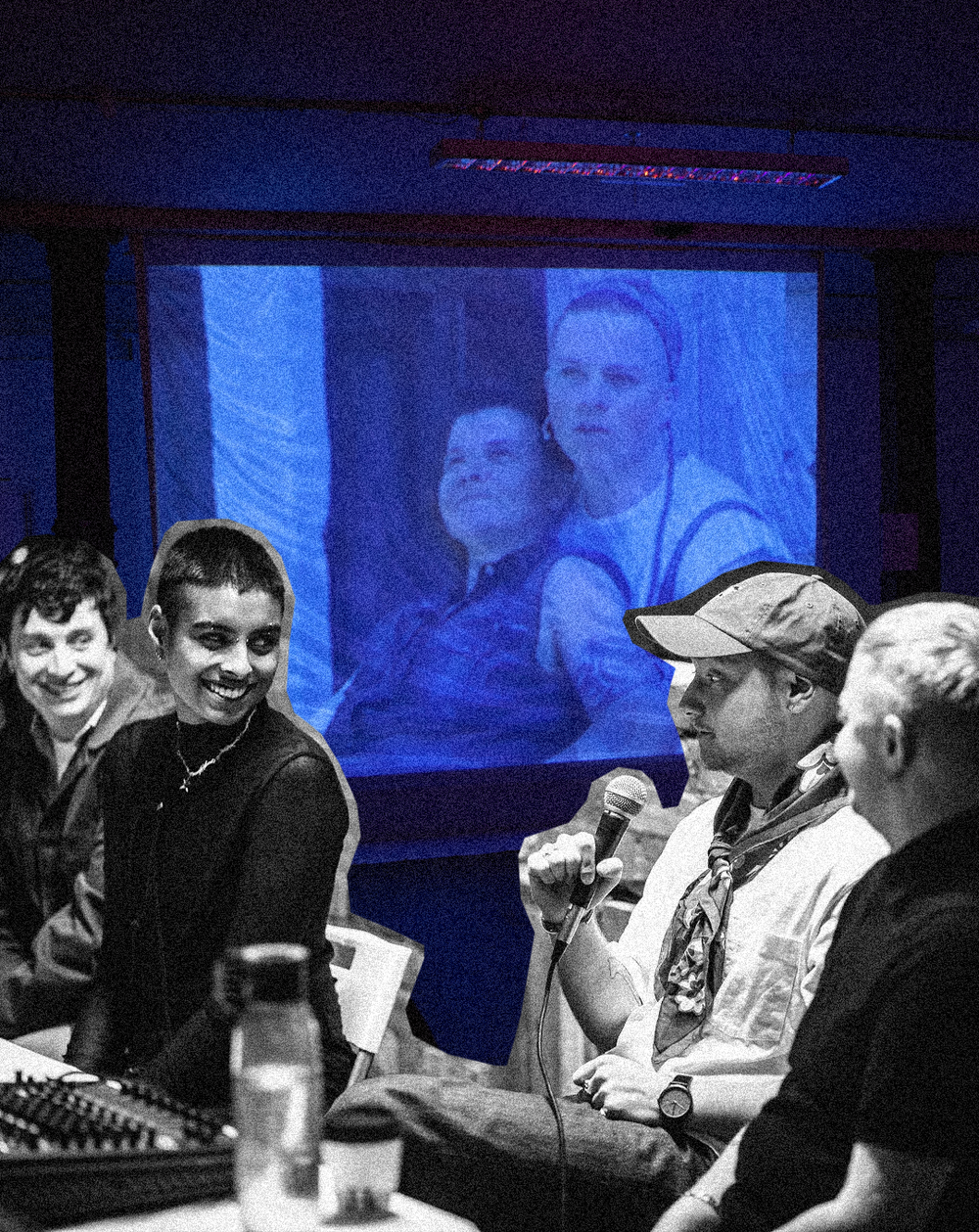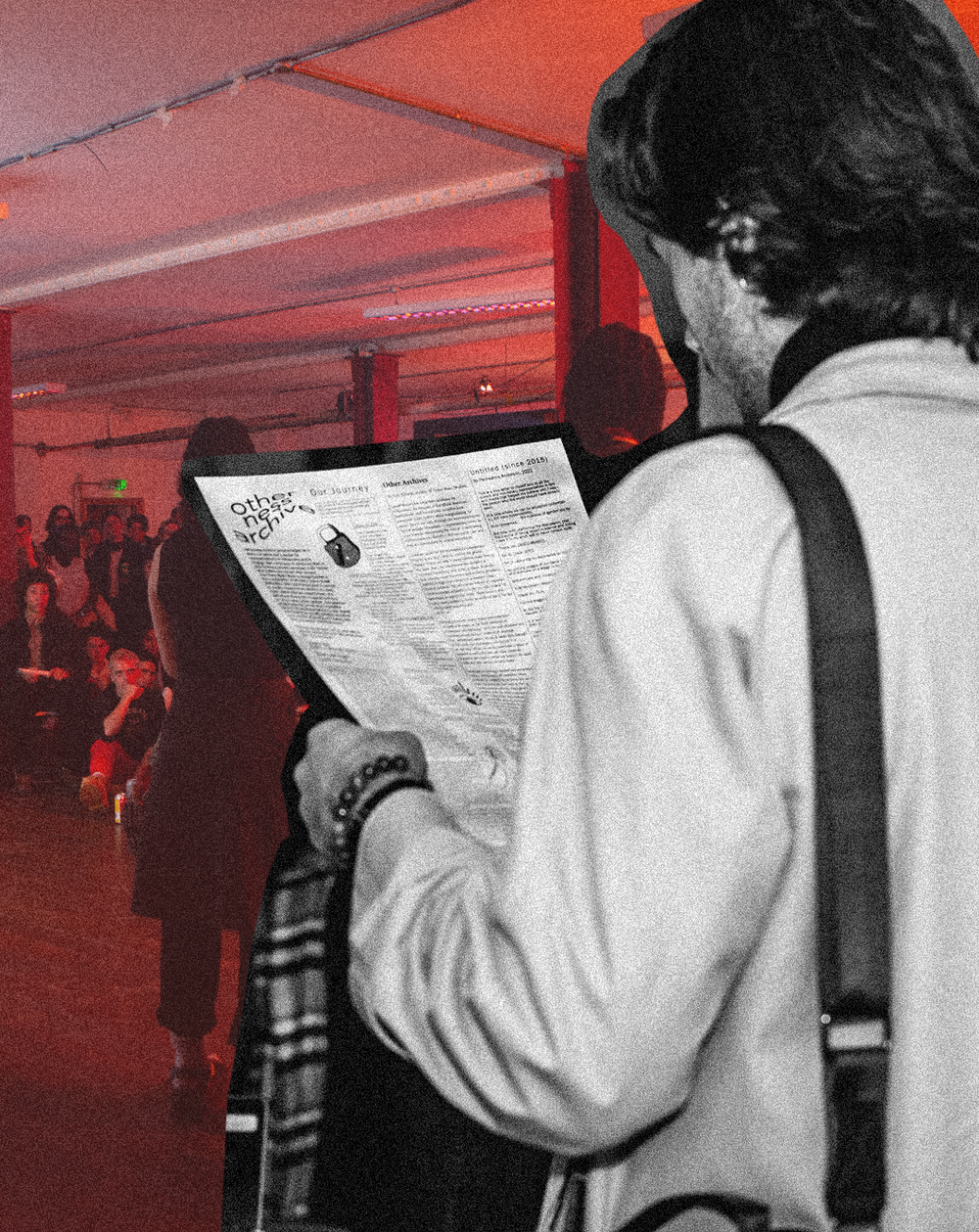Otherness Archive on the Importance of Platforming Trans and Queer Filmmaking
Launching January 31st, Otherness Archive goes far beyond chronicling history – it is “a working, living resource”. Borne from London-based artist and filmmaker Sweatmother’s own experiences of being othered, the project “defies the historic censorship of homosexual, trans and racial themes, and instead highlights them as representations of otherness that deserve equal, if not greater, recognition.” By platforming both the forgotten pioneers of cinema and contemporary filmmakers, the archive ensures that “a multiplicity of experiences that exist beyond those solely of white heterosexual men” can be accessed.
Below, photographer El Hardwick discusses the purpose of the archive and the importance of recording our own histories with the creator Sweatmother.
What was your incentive to create the archive?
I had a strong desire to highlight a practice that has been forgotten, and felt an absence of trans masculine artwork and representation. When cruising archives, I felt that trans art was hidden, even lost, in this abyss of unwanted films. I didn’t know at the time, but the archive was informed by trans-feminist archival practices: re-categorising the abject, unwanted and othered as valuable knowledge – a practice more of us should collectively participate in at this political moment.
I learnt a lot of my archival ethics from AIDS activism in the 80s and 90s. Despite living under austere conditions, activists challenged what would be remembered and forgotten. I think about how challenging it was for activists to live in mourning and still try to preserve the extraordinary lives of loved ones. This radical, untaught and emotionally-driven archival practice, which we have carried over generations, empowers us to preserve our own stories and remember the people important to us.
___STEADY_PAYWALL___
What’s been your own journey as a filmmaker and when did your interest in film begin?
My interest in films has always been part of me. When I was young, I would eat dinner slowly on Oscar’s night so I could watch the glamour of Hollywood. It’s hard to choose a particular moment when I considered myself a filmmaker. I had a home cinema camera growing up. It took me until my teens to realise that a director could be a woman. I was first drawn to women’s activism in cinema because of the negative, difficult journey of trying to access the film industry in the mid-2000s.
You’ve mentioned that the origins of your love for found footage began when you were 23. Can you tell us about how such footage became a medium for your own creative practice?
I started using found footage because I felt energised to make work but didn’t have access to a camera. I cruised through archives, public domain work and home movies. Although I didn't have the language, it was my transness that I was trying to communicate through the visual form of sourcing found footage. My work was about otherness; feeling marginalised in this abject sort of way. At the time, I was bed bound. I felt connected to images and how I could use them to understand my identity.
Found footage art is a liberating, affirming form of expression for me without gatekeeping. I once spent 17 hours cruising archives. Imagine being alone watching this work that wasn’t shown, is unclaimed; existing in this abyss of the unwanted. The mystery and possibility of creating something from existing material was a feeling of unbound freedom. Through this process I gained an understanding of how to ethically source found footage – for example, whether it was made to be seen.
I want to emphasise how black, trans, queer, feminist movements have always resisted their conditions – surviving in spite of them. It’s important to stress that marginalised artists always find ways of expressing ourselves, no matter what tools we have access to.
Were there any notable discoveries or surprises when you received responses to the open call for work?
Without generalising, they were all incredible discoveries. It was amazing to see the sheer volume of work that existed. The surprising thing is that trans masculinity* is universal; representation and themes pop up in other forms of trans and queer-feminist art. We have work that covers cross-dressing, dyke, butch, bulldagger, stud – they aren’t siloed into one category.
*Note: For Otherness Archive, the term trans masculine refers to the nuances of the trans masc experience in moving image work and to the variations of masculinities including but not limited to: trans men, non-binary, dyke, butch, bulldagger, stud and gender non-conforming people.
I’m really interested in how the archive isn’t just a collection of moving image work about trans masculinity, identity and gender – but more broadly seeks to include any work created by artists who identify as such. Why do you think it’s so important that trans masc representation is not solely limited to on-camera visibility, but also behind the camera?
My experience cruising archives, even LGBT+ ones, showed me how trans masculinity was often labelled in ways that made it inherently othered. Trans masculine works were often categorised in taboo genres because, at times, those with the power or privilege to be archivists did not correctly label these categories. Possibly, they couldn't spot ‘otherness’ because they had never experienced it.
I find that trans filmmakers who are in control of their own camera or structure are able to authentically tell our stories. This is why we choose to also include performance, experimental work and video art. I found trans filmmakers often used non-traditional filmmaking techniques because it may represent the unrestricted parts of their identity, and allows control and agency over their work.
How has censorship historically affected access to this kind of work?
I can better answer this question focusing on my own experiences using archives. There was - and still is - a lack of language to describe how we live. This produces censorship because the work is categorised in a way that gives less access, if at all. For example, cross-dressing and drag is labelled as ‘pornographic content’ or ‘a woman in men’s clothing’ – completely diminishing it as a form of transness. One important thing Otherness Archive does is provide opportunities for trans and queer people to categorise the work, which broadens exposure to so many aspects of queer life – from language to fashion customs.
Transness has always been historically represented and misrepresented. The Motion Picture Association of America created NC-17 (No Children Under 17 Admitted) in 1990, to replace its previous highest rating X and the “stigma of pornography” associated with it. However, most mainstream cinemas in America refuse to screen NC-17 films – leading to older work being blacklisted; meaning no distribution and little-to-no-life after a film’s creation. NC-17 and X ratings have a history of being used specifically against “representations of otherness” such as trans, lesbian and gay films, especially black queer moving image work, preventing them from reaching mass audiences and being easily accessible. This rating system demands recognition from the queer culture it has repeatedly censored. This is why I chose the logo for the archive to be ‘NC-17’ – to remember erased history, and as a cognitive tool to subvert its original function; reclaiming it as a symbol of transgression.
Can you speak on the importance of including porn in the archive?
I noticed there was a strict criteria when selecting what content enters [other] LGBT+ archives. [Yet] people are horny for trans representation in film. In Godasses - Part III: Jamal Phoenix by Emre Busse, Phoenix speaks about working in porn, that “pussy is all [the porn industry] focus on – but I want them to focus on my gay asshole.” Hearing these authentic trans experiences is super hot, desirable and empowering.
What do you envisage for the future of Otherness Archive?
I want to be realistic about the future but also dream of unbounded possibilities. Continue accepting open submissions to the archive – encouraging any individual, regardless of experience, to submit work where appropriate. Future funding is a key aspect to sustaining and growing the archive. We really want to focus on trans femme artists and representation in film, performance and art.
However, a big part of this project is making the most of now. How can we preserve and create resources for our community now?
Words: El Hardwick
Otherness Archive’s digital archive officially launches January 31st at Othernessarchive.com – including the international premier of ‘Bros Before’ by Henry Hanson.
Otherness Archive also guest-curates ‘Biting The Image’ on January 25th at the ICA: a special program for London Short Film Festival’s 20th Anniversary, programmed by April Lin 林森, curator for Otherness Archive.


